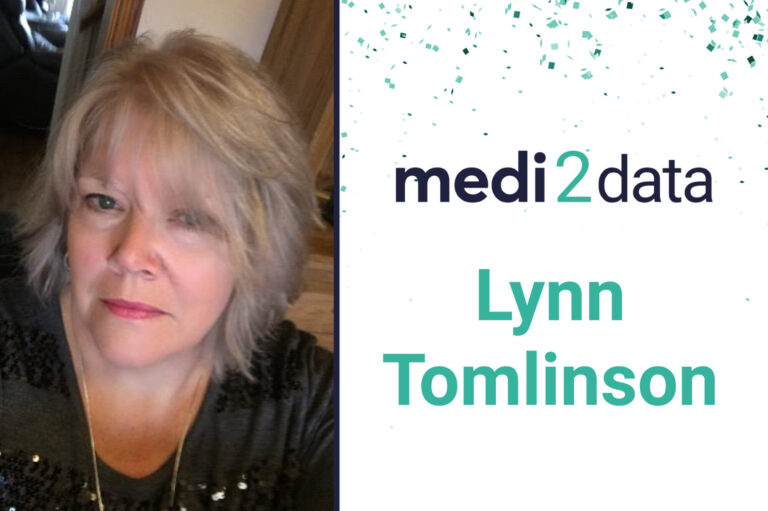The changing world of patient information
When I first entered the world of primary care as a bright-eyed young medical secretary 38 years ago, I quickly learned the art of juggling a huge number of responsibilities in a highly-organised, but incredibly time-consuming way. There were vast swaths of paper documents, often covered in illegible hand-writing to process, file and sort – and the speed at which we worked meant that sometimes vital information resided in a colleague’s head, rather than in an accessible repository.
In my earliest days, patient referral letters were typed on an old portable typewriter, with a carbon copy for the patient notes. For those of you too young to remember those days, the word processor is a wonderful invention!
The seeds of change blew my way in 1989 when, as a new practice manager, I oversaw the implementation of a computer system across the practice. For me, technology was new and exciting. Technology would revolutionise the way we worked. Technology was progress.
But computerising patient records was also hard work.
Ensuring that the relevant nuggets of patient information for 2,500 patients were correctly inputted into the system was a daunting task. Where to start, how to prioritise… and what were read codes??
At that time, there were no guidelines or suggestions, no paper-light practices, no information governance and no magic medication uploads. For printed prescriptions, we had to upload the repeat medication for all of our patients, and all of this whilst running the practice in the usual way.
Obstacles to digital adoption
I was lucky to work for a team who were quite progressive for that time. Once we had the system up and running, it transformed the way we worked. Since then, I’ve worked for, and with, organisations whose leaders were quite opposed to digital adoption. And surprisingly, many of the objections heard today are the same concerns as were voiced back then.
Data quality, privacy, implementation, cost, training, confidence in the system, job security fears, and resistance to change were all hurdles to overcome. Many GPs worried technology would create more problems than it solved.
The unreliability of early systems didn’t allay these fears either, so to push on to the next stage of a technological journey could be met with even more resistance. In 1990, the new GP contract came along, enabling us to forward plan and assess our funding options and opportunities. Those changes revolutionised general practice, making the use of technology vital if we were to remain in profit.
Of course, during the nineties, there were very few choices for general practice IT, but a couple of the main suppliers managed to see it through to the millennium and continue to bigger and better things. Throughout the 2000s, systems started improving and changing at a head-spinning rate. Just keeping up with the changes was a job in itself and IT managers started to be recruited alongside practice managers to support the pace of change.
Innovation stalled while the National Programme for IT attempted to implement one system across the NHS. When that programme ran aground, it was with relief I saw the focus was on localised investment, with system integration and interoperability at its heart.
Innovation was back on the agenda.
In 2012, I became a regional customer training manager for EMIS and started witnessing new, innovative digital systems springing up with increasing regularity. The steep curve of digital acceleration went hand in hand with the formation of new regulatory bodies to help maintain standards of compliance and interoperability across the healthcare sector.
With GPs and practice managers now somewhat reassured that digital systems would work and keep patient data safe, they found themselves with a welcome, but dizzying, choice of products and services to choose from.
So, where do you start?
Making the right decision for your practice
With hundreds of IT solutions now available, how do you know what’s best for your practice? What will deliver the best ROI and practice efficiencies? How do you coordinate different products and services within the practice? When does a practice management team even have time to review the options?
It can be easier to carry on with the familiar daily routines, rather than be spun around by the torrent of digital options, leaving you confused and nursing a headache. However, the time that you spend assessing and implementing something new, could save you hours, days, or weeks in the near future.
It’s the initial decision to drive business change that takes time and forward-thinking.
A few simple rules to get you on track
Every primary care organisation is different and will need different solutions to drive efficiencies. Still, I’ve learned from my many years’ experience of IT procurement, implementation, integration and training, that there are some universal guidelines can help you make the right digital choices and avoid pitfalls along the way:
- Keep it simple. If you can’t see how a system can deliver benefits straight away, it’s not going to work.
- Accreditations. Make sure your digital partner meets NHS and industry standards, so you know you can trust them with your data.
- Testimonials. Speak to people who’ve used the system. Discover what they’ve enjoyed and any snags they’ve experienced along the way.
- Support. Make sure you’ll be fully supported when you need help and advice.
- Business Change. Encouraging your team to help shape the business change will go a long way to ensuring its success – whether you’re implementing an ‘add on’ piece of software, or a complete system change. Examine the way your individual team members work now, and ask them to suggest changes. Track the changes and progress, and give feedback.
- Benefits. Ensure your team understands the benefits of the proposed changes for themselves, the medical staff and patients.
- Training. Ensure that training is adequate and that protected time is given for staff to become effective. Make sure all staff involved are happy and ‘buying in’ to the new system and its possibilities.
A last thought
For those of you old enough to remember the pink and blue cards placed in Lloyd George Folders to enable staff to pick out the diabetics, or smears due, or childhood vaccinations, think about the way that technology has enabled us to offer fantastic patient care, with working efficiencies across the board.
Would you have believed the way things are now compared to 35 years ago? I definitely wouldn’t have believed it. If I need to get a list of who needs a flu vaccination now, I can do it within five minutes of sitting at my computer and get the recall letters printed at the same time.
Technology is moving forward at an alarming rate. We need to keep up to take advantage of all it has to offer.
Lynn Tomlinson is a former practice manager, senior manager at PCT level, and GP practice clinical data trainer. Lynn is currently the clinical data specialist at Medi2data, responsible for auditing consented eMR patient data extractions from the GP practices’ clinical systems and the integration of clinical code releases (Snomed CT) with eMR.










